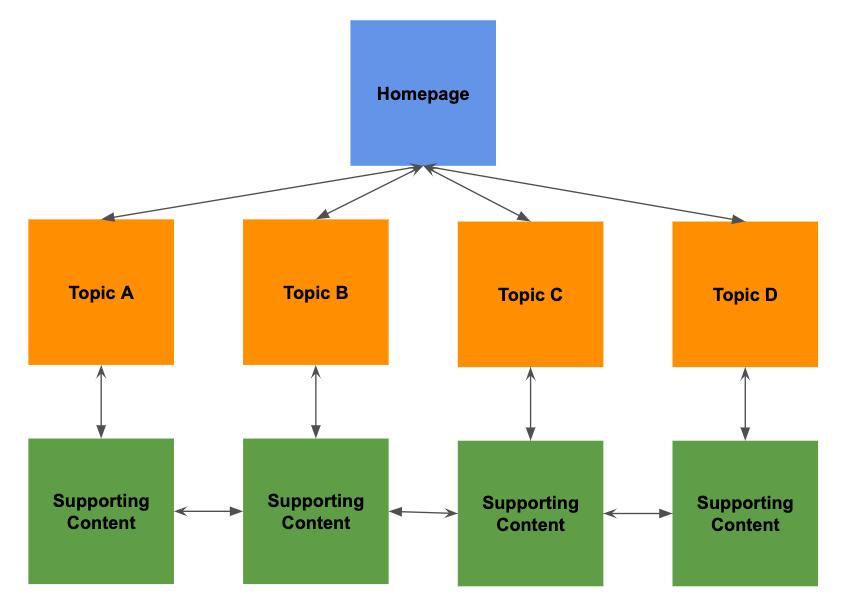
When it comes to improving your product’s conversion and sales, Search Engine Optimization (SEO) helps you reach a significant audience.
For an SEO to work as per your requirement, it has to be dependent upon many aspects. Such as internal linking, which you might not have paid much heed to or have not realized its true potential.
You might have done a better job if you had linked related articles and blogs on your webpage. But there’s always a possibility to get a deeper insight into internal linking just by following specific tips to get the best internal linking experience.
This article will learn how you can get the best out of internal linking and improve your sales and boost your session duration. So, let’s get started.
Importance of internal linking
Many SEO professionals focus on building external linking and gives less importance to internal linking. But that doesn’t make internal linking less critical.
Internal links are the hyperlinks on the same website between two pages. Can use internal links in the body text of your blog or the page though you can mostly find them in the sidebars, footers, and menu of your website.
Internal links find a path for crawlers which assists search engines to know the structure of your website. The focal point of internal links is that it doesn’t carry as much weight than external links. That makes it easy to control and brings good traffic to the website.
Internal links also increase your website’s session duration that makes a user stick to your website content.
Strategies to have a successful internal linking experience
Adding Relevant links
It becomes quite essential to add relevant links to your page. You should always ensure whether the link you’re adding goes with your user’s interest or not because many users will mostly click the link that goes well with the source link.
Unnecessary links serve as a disadvantage to your SEO Profile as search engines give tremendous importance to User Experience (UX). Also, Google may consider your website spam. So, if you’re unsure about the link is relevant, you better choose not to use it.
Don’t overuse internal links
When it comes to using internal links, always make sure you only use the number of links needed for your website. Google webmaster guidelines throw light upon using the recommended amount of interlinks which may help you get better results.
Amount of links to be added depends on various factors such as target audience, topic and length of the content source, and the number of websites that link to your website.
Increase the number of contents on your page
More content leads to providing more internal links to your webpage. It will lead to more likable content and hence will improve your internal linking strategy.
To create high-quality content using a relevant keyword becomes an important aspect. So, use appropriate keywords for your content to reach a primary audience.
Prefer not to push links to the footer and the sidebar of your website
Pushing extensive links to the footer or sidebar of your website may seem like a pleasant option. But it’s considerably is not. Many websites try to cram good keyword internal links to the web site’s sidebar, which is undoubtedly not suitable for a website, especially for a website with extensive hierarchical links.
This technique will negatively impact a user as it will replicate the more amount of links to every page of your website. Your website may get penalized as google will indicate your website as spam.
Use dynamic content to add more internal links to your website and escape spam penalty. You can create multiple layouts instead of those same sidebars and footers.
Using Anchor texts
Anchor texts are clickable linked texts which indicate users and search engine about related content information. So, it’s necessary to use relevant keywords to receive better output.
Your main motto should always remain for the user to click on it. It should be appealing enough for the reader’s even if comes with the price of fewer keywords. Make sure you don’t overuse it as search engines collect the session duration and the pages visited through the link.
Quickssprout has got you covered with all the technical details to look at when using anchor texts.
Check the health of your link
A link that leads to no page can undoubtedly make a negative impact on your SEO profile. And can lead to having poor user experience ratings. There are various techniques and methods through which. Can resolve this broken link problem.
Manually checking all the links can be a lengthy process to do. However, there are tools like WhatsMySerp that can easily manage this type of errors.
In Conclusion
Though backlinks have been a preferable thing to boost your SEO performance, Internal linking provides the same opportunity while giving easy control over the website and reaching and connecting a large audience.
In this article, we discussed many strategies that you can consider to boost your SEO content. Follow this guide, and you’ll be easily able to get the result you desired.




